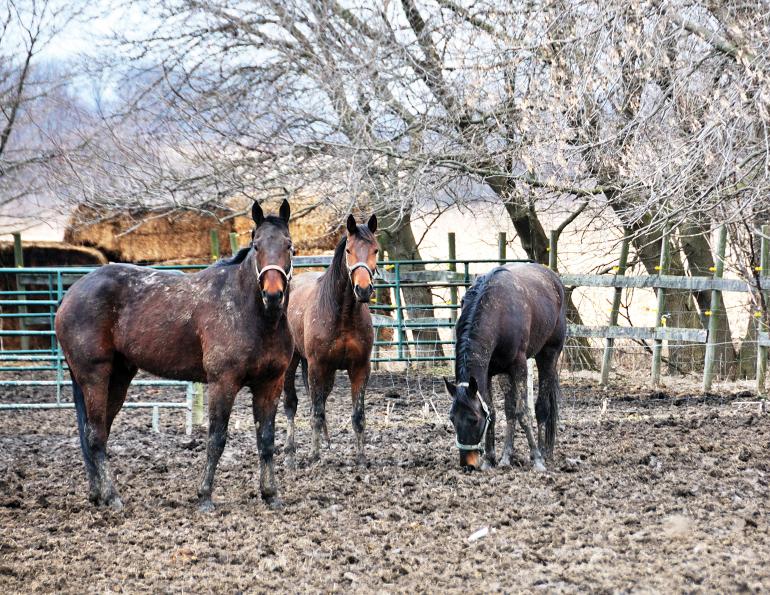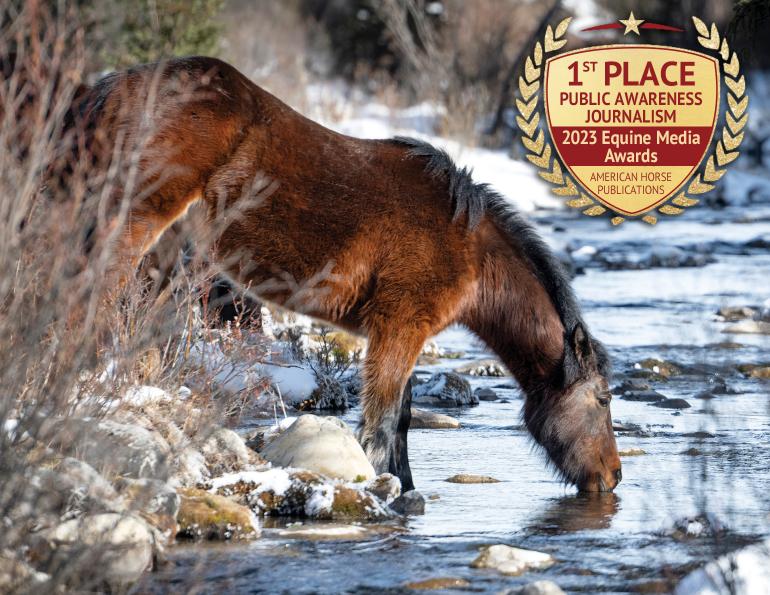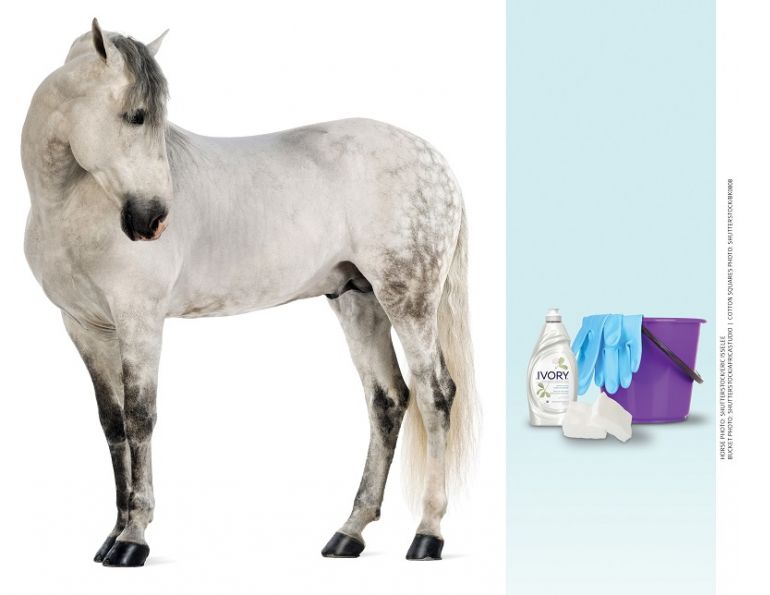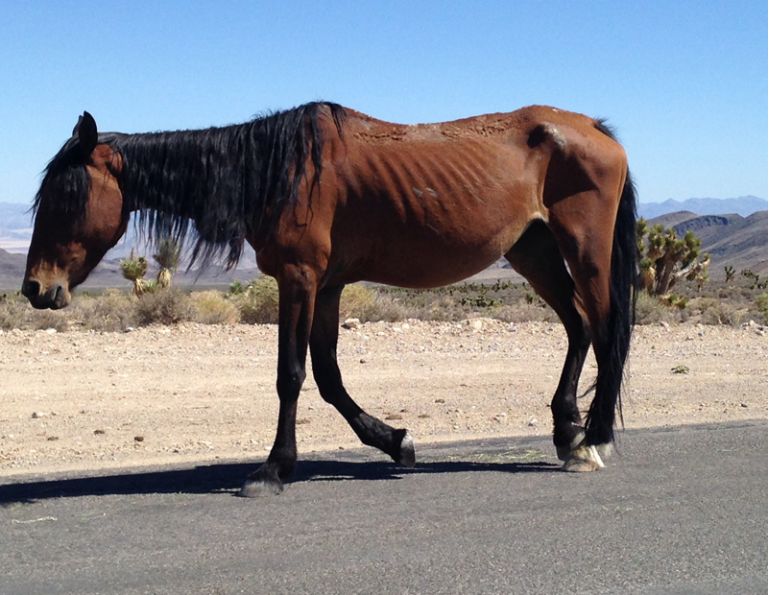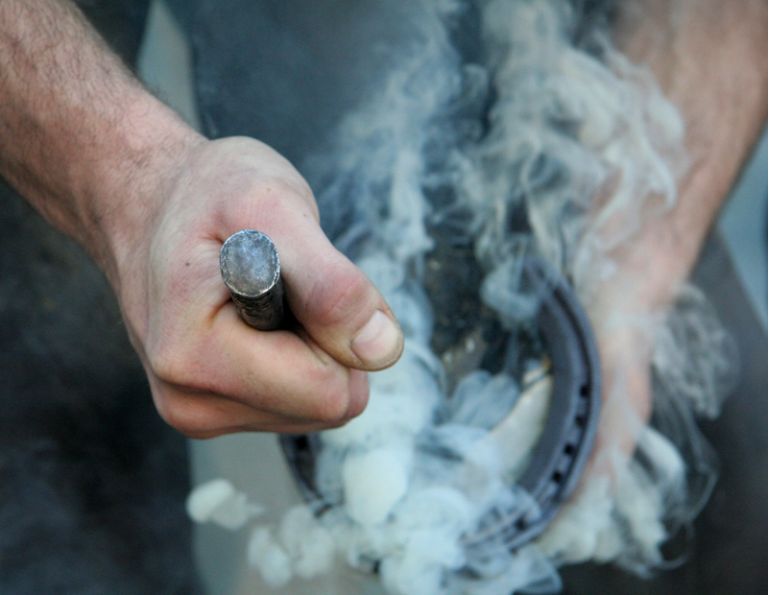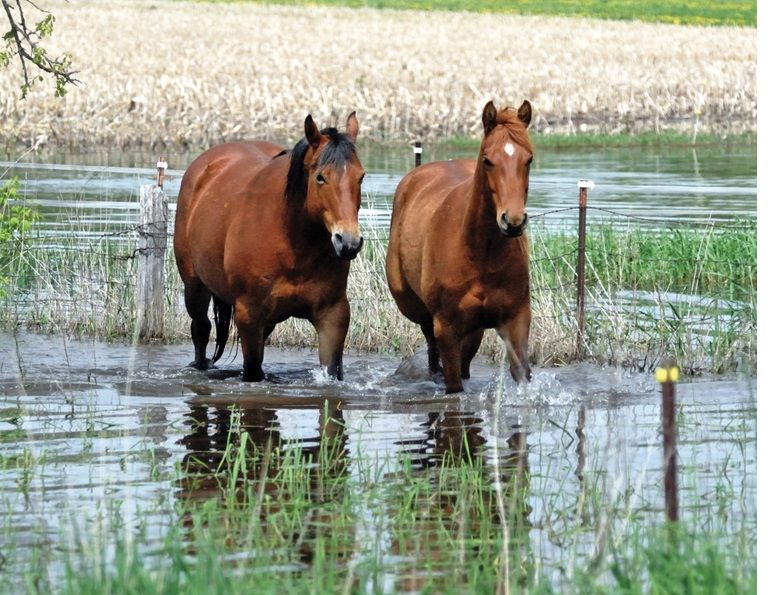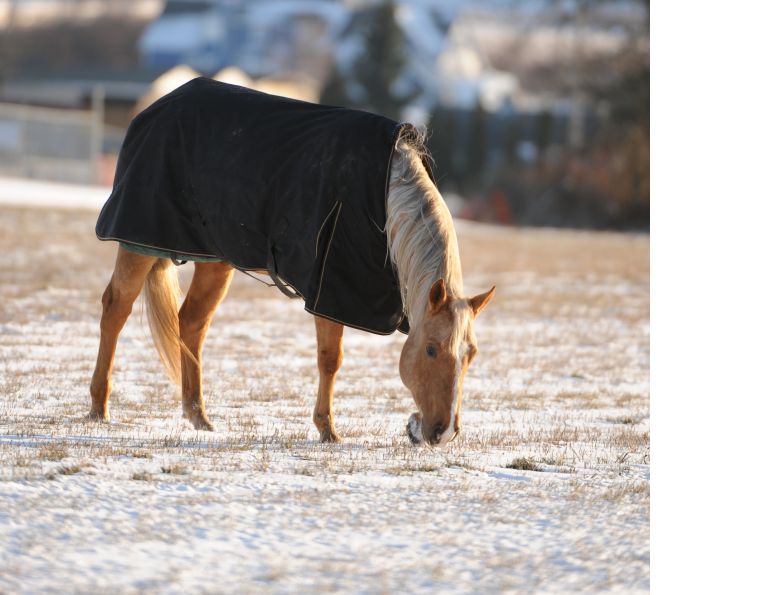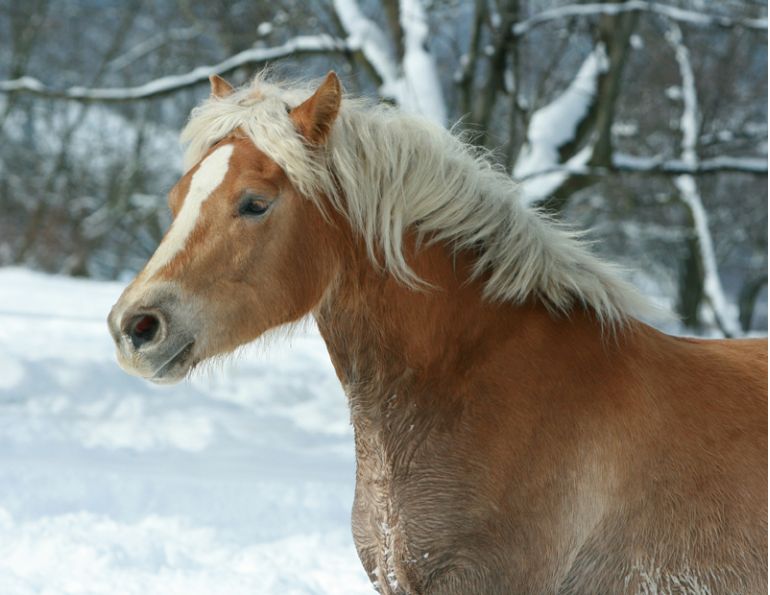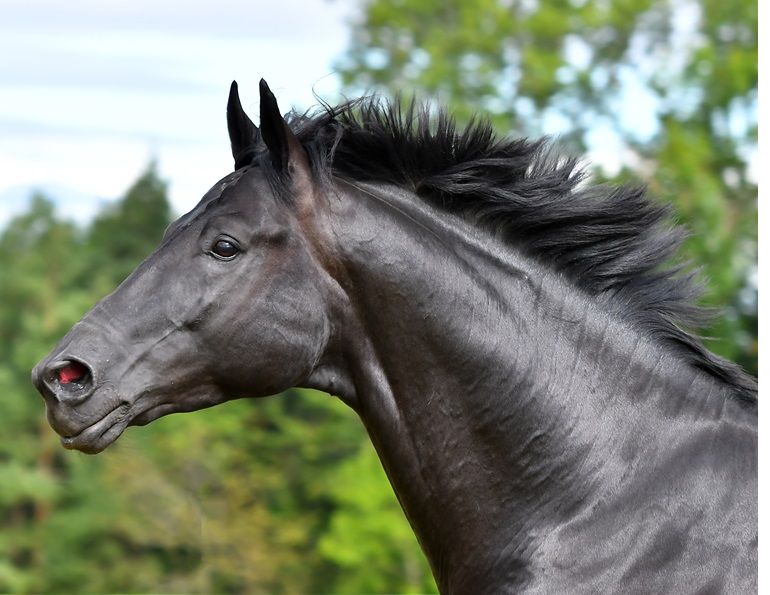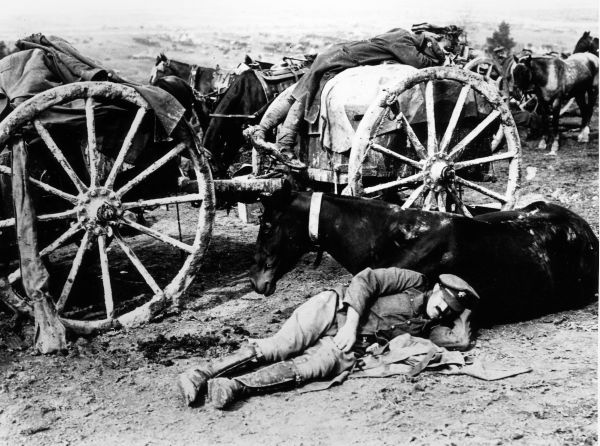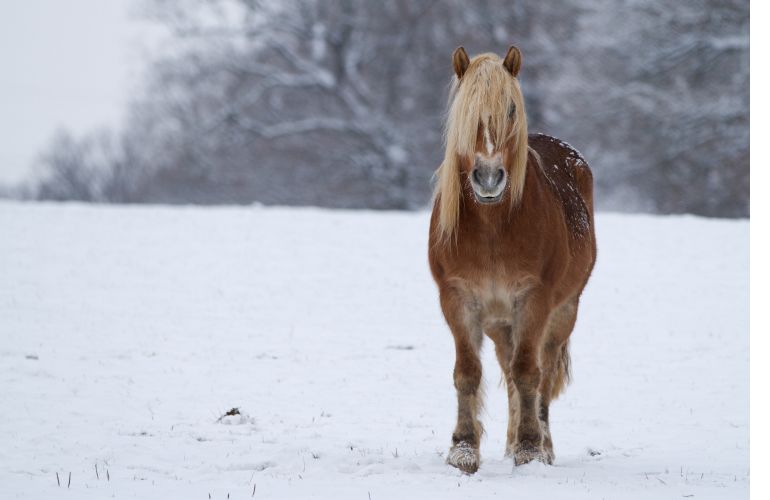By Kathy Smith
Mud fever—also called greasy heel, scratches, or pastern dermatitis—is a skin disorder that commonly affects the lower legs of horses, especially around the heels and pasterns. It occurs most often in the wet seasons of fall, winter, and early spring, when horses spend long hours in muddy conditions that allow bacteria and fungi to multiply.
Normally, a horse’s skin serves as an effective barrier against harmful organisms. But when it remains wet for extended periods, that protection weakens, allowing microbes to enter through small abrasions or breaks in the skin. Horses with pale skin or white legs are often more vulnerable, and those with thick feathering can also be at higher risk since the long hair traps dampness against the skin.
Signs of Mud Fever
The most recognizable symptom is the development of oozing sores that dry into painful, crusty scabs. Mild swelling may also occur around the affected area. In advanced cases, the condition can cause intense heat, significant swelling, skin loss, and even lameness. When symptoms become this severe, veterinary care is essential.

Mud fever is associated with wet and muddy conditions, which can compromise the skin’s integrity allowing bacteria to gain entry and cause the skin to become sore and painful. Pink skin under white hair is more sensitive. Photo: Fotolia/Chelle129
Related: Muddy Horse Paddock Footing Fixes
Treatment
Successful treatment of mud fever begins with moving the horse to a clean, dry environment. Then the following steps should be taken:
- Carefully clip the hair away from the affected area to make cleaning easier and to render the area less hospitable to bacteria.
- Wash the area thoroughly but gently with warm water and an antibacterial cleanser. Avoid cold water and vigorous scrubbing, both of which will further irritate the skin. If the crusts are dried and hard, try to soak them off rather than picking at them. Tough scabs can also be softened prior to washing with a generous layer of antibacterial ointment or cream.
- Thoroughly dry the area with a clean towel, blotting as opposed to rubbing so as to avoid causing the horse discomfort and damaging the skin further.
- Apply liberal amounts of an antibacterial ointment or cream at least once daily. The leg should be bandaged to keep it clean.
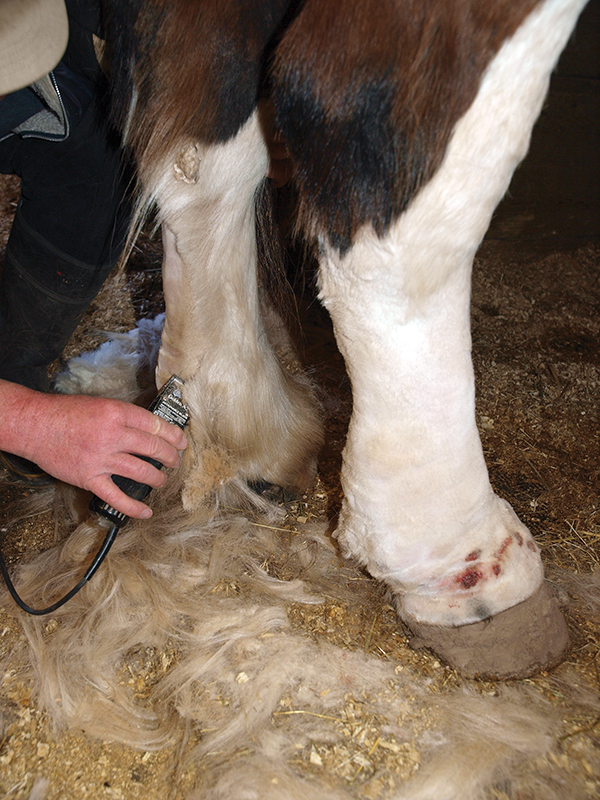
Move the horse to a dry, clean environment, and clip the hair to facilitate treatment. Photo: Pam MacKenzie Photography
The procedure should be repeated daily until the area has healed but refrain from washing the area too often as the additional moisture will only perpetuate the problem. Instead, allow any accumulated mud to dry and then gently brush away.
The above treatment plan may be adequate for mild to moderate cases of mud fever. In severe cases a veterinarian can take a swab to test for bacterial growth to allow for use of the most appropriate antibiotic.
Prevention
The best way to prevent mud fever is to minimize exposure to wet, muddy conditions, through good paddock management or stabling the horse at night on clean, dry bedding so skin has a chance to dry out. All horses should have their legs checked during routine grooming for abrasions and early signs of mud fever. Horses that are prone to mud fever may benefit from having their legs preemptively clipped and from application of a barrier cream prior to turnout or exercise so long as the legs are clean and dry.
Related: Clipping 101
Related: Preventing Fall and Winter Colic
Main Photo: iStock/Steverts



